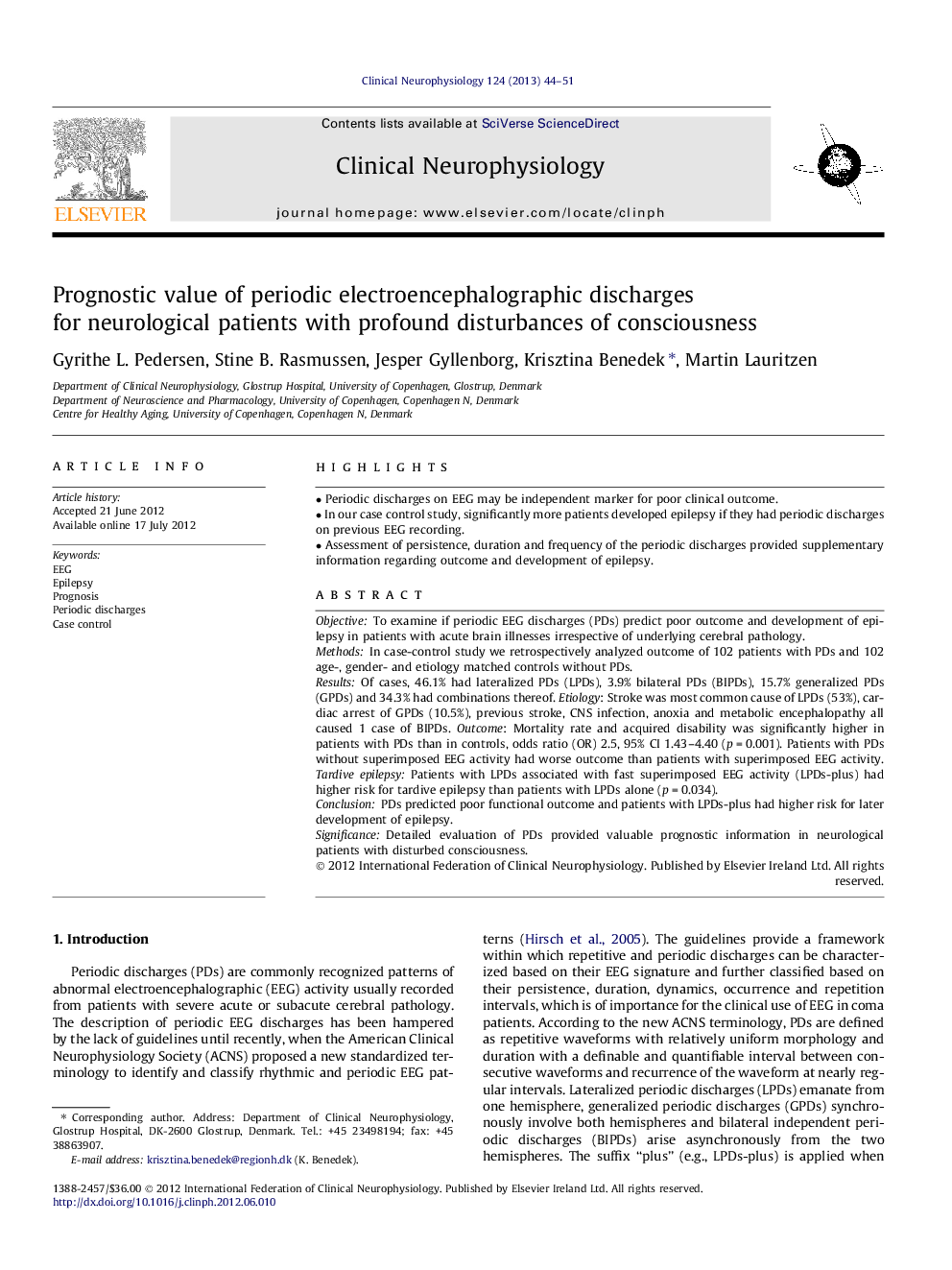| Article ID | Journal | Published Year | Pages | File Type |
|---|---|---|---|---|
| 3043032 | Clinical Neurophysiology | 2013 | 8 Pages |
ObjectiveTo examine if periodic EEG discharges (PDs) predict poor outcome and development of epilepsy in patients with acute brain illnesses irrespective of underlying cerebral pathology.MethodsIn case-control study we retrospectively analyzed outcome of 102 patients with PDs and 102 age-, gender- and etiology matched controls without PDs.ResultsOf cases, 46.1% had lateralized PDs (LPDs), 3.9% bilateral PDs (BIPDs), 15.7% generalized PDs (GPDs) and 34.3% had combinations thereof. Etiology: Stroke was most common cause of LPDs (53%), cardiac arrest of GPDs (10.5%), previous stroke, CNS infection, anoxia and metabolic encephalopathy all caused 1 case of BIPDs. Outcome: Mortality rate and acquired disability was significantly higher in patients with PDs than in controls, odds ratio (OR) 2.5, 95% CI 1.43–4.40 (p = 0.001). Patients with PDs without superimposed EEG activity had worse outcome than patients with superimposed EEG activity. Tardive epilepsy: Patients with LPDs associated with fast superimposed EEG activity (LPDs-plus) had higher risk for tardive epilepsy than patients with LPDs alone (p = 0.034).ConclusionPDs predicted poor functional outcome and patients with LPDs-plus had higher risk for later development of epilepsy.SignificanceDetailed evaluation of PDs provided valuable prognostic information in neurological patients with disturbed consciousness.
► Periodic discharges on EEG may be independent marker for poor clinical outcome. ► In our case control study, significantly more patients developed epilepsy if they had periodic discharges on previous EEG recording. ► Assessment of persistence, duration and frequency of the periodic discharges provided supplementary information regarding outcome and development of epilepsy.
